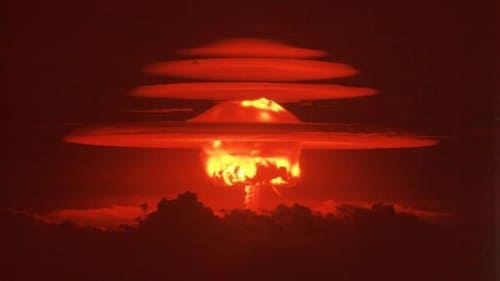America's Lost H Bomb
February 5th 1958, a U.S. Air Force B-47 jet bomber collided with a fighter craft during a military exercise. Badly damaged, the crew asked permission to jettison its thermonuclear device (H-bomb) to avoid a possible explosion while trying to land at the Army airport near Savannah, Georgia. The bomb was dropped into the Atlantic Ocean near the border between Georgia and South Carolina. Despite initially telling the public that only "parts of a nuclear bomb" were lost in the accident, the U.S. Government searched in vain for what was a potentially fully operational atomic weapon save for a "nuclear capsule" which was not present in the device when it was lost. Nevertheless, the ocean's elements could corrode and eventually open up the bomb, releasing the refined radioactive uranium that remains inside. This documentary shows efforts lately made to find and recover the weapon. February 5th 1958, a U.S. Air Force B-47 jet bomber collided with a fighter craft during a military exercise. Badly damaged, the crew asked permission to jettison its thermonuclear device (H-bomb) to avoid a possible explosion while trying to land at the Army airport near Savannah, Georgia. The bomb was dropped into the Atlantic Ocean near the border between Georgia and South Carolina. Despite initially telling the public that only "parts of a nuclear bomb" were lost in the accident, the U.S. Government searched in vain for what was a potentially fully operational atomic weapon save for a "nuclear capsule" which was not present in the device when it was lost. Nevertheless, the ocean's elements could corrode and eventually open up the bomb, releasing the refined radioactive uranium that remains inside. This documentary shows efforts lately made to find and recover the weapon. February 5th 1958, a U.S. Air Force B-47 jet bomber collided with a fighter craft during a military exercise. Badly damaged, the crew asked permission to jettison its thermonuclear device (H-bomb) to avoid a possible explosion while trying to land at the Army airport near Savannah, Georgia. The bomb was dropped into the Atlantic Ocean near the border between Georgia and South Carolina. Despite initially telling the public that only "parts of a nuclear bomb" were lost in the accident, the U.S. Government searched in vain for what was a potentially fully operational atomic weapon save for a "nuclear capsule" which was not present in the device when it was lost. Nevertheless, the ocean's elements could corrode and eventually open up the bomb, releasing the refined radioactive uranium that remains inside. This documentary shows efforts lately made to find and recover the weapon. February 5th 1958, a U.S. Air Force B-47 jet bomber collided with a fighter craft during a military exercise. Badly damaged, the crew asked permission to jettison its thermonuclear device (H-bomb) to avoid a possible explosion while trying to land at the Army airport near Savannah, Georgia. The bomb was dropped into the Atlantic Ocean near the border between Georgia and South Carolina. Despite initially telling the public that only "parts of a nuclear bomb" were lost in the accident, the U.S. Government searched in vain for what was a potentially fully operational atomic weapon save for a "nuclear capsule" which was not present in the device when it was lost. Nevertheless, the ocean's elements could corrode and eventually open up the bomb, releasing the refined radioactive uranium that remains inside. This documentary shows efforts lately made to find and recover the weapon.



 AD
AD
